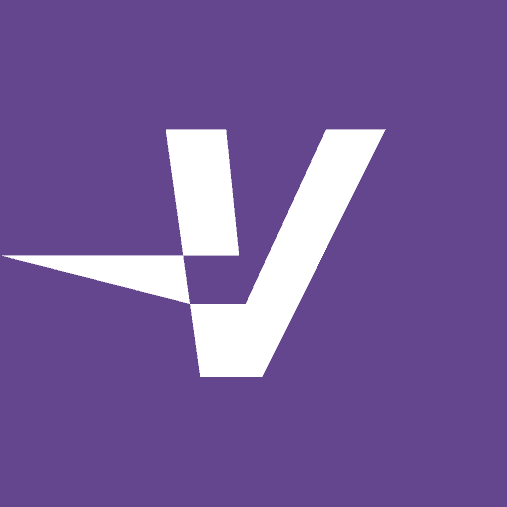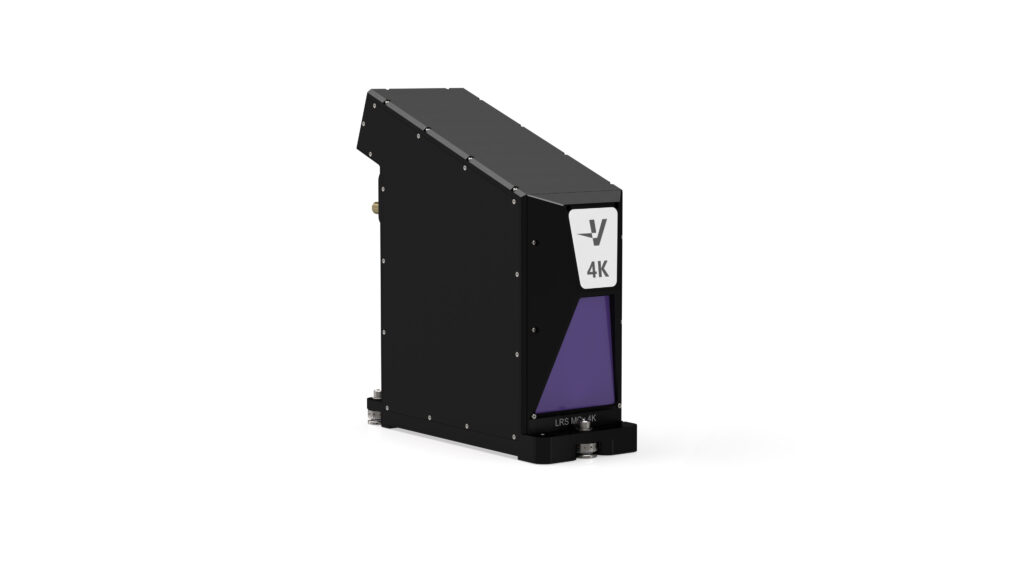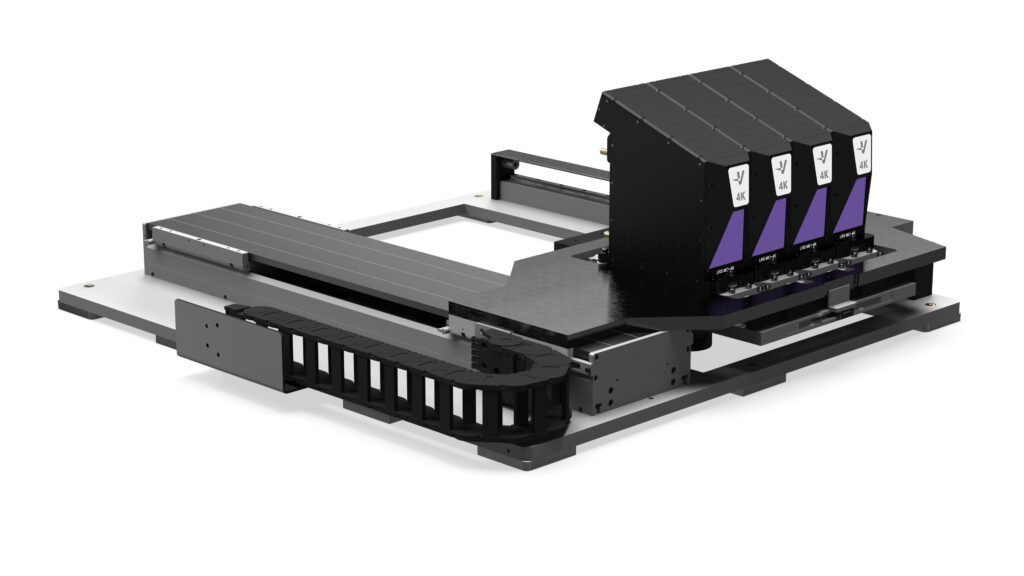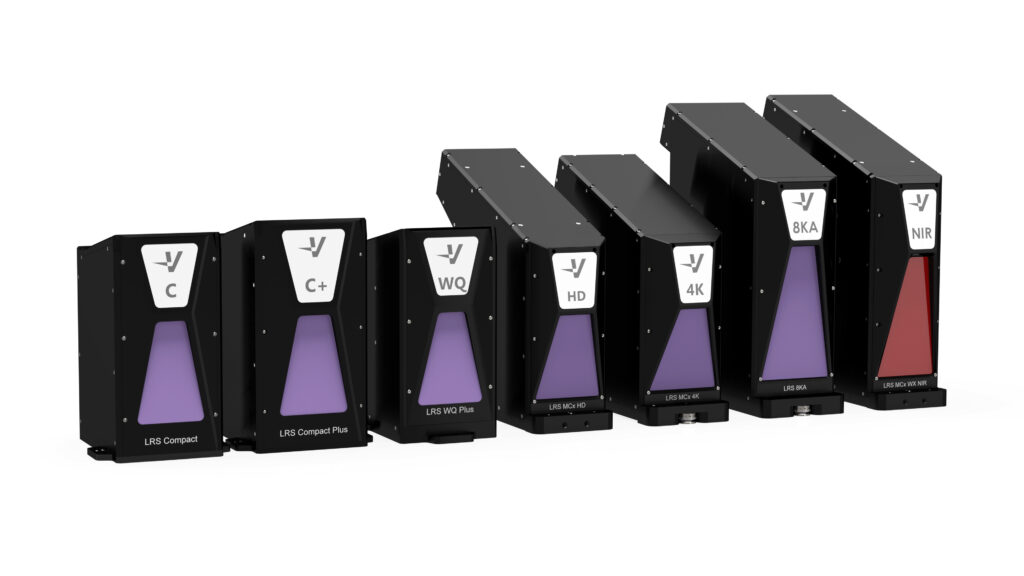
At the heart of some of the most important 3D printers in the additive manufacturing (AM) industry are subsystem makers who empower these printers to do what they do. Without the companies that make digital light processing (DLP) light engines, we wouldn’t have the Carbons and Desktop Metals of the world. Among them is VISITECH, the Norwegian pioneer of DLP systems whose technology is driving the vat photopolymerization space forward.
3DPrint.com recently had the opportunity to sit down with Alfred Jacobsen, Managing Director of VISITECH Engineering GmbH, to learn about what the company plans to showcase at Formnext 2023.
VISITECH’s True 4K Light Engine
As VISITECH rolls out a number of exciting technologies, such as scrolling and 8K projectors, it’s also in the midst of launching its new NEOS platform. Under the new NEOS label, VISITECH has bundled all seven of its DLP light engine systems for AM, which now include a number of novel platforms, as well as upgrades to existing DLP systems.
Perhaps most notably, the company has introduced its new LUXBEAM® LRS-MCx 4K light engine, which promises to double the additive manufacturing capacity of DLP systems. Breaking down the numbers, this translates to a staggering 8 million native pixels embedded within the engine’s DMD. Where once you might have needed four light engines to deliver 8,000 pixels width, with the LRS-MCX 4K, just two suffice.
This streamlining has significant operational benefits. With fewer engines, calibration and alignment—especially in systems where engines are stacked in a scrolling system—become simpler and more efficient. Additionally, with the higher pixel count, seamless side-by-side stacking of engines is possible even at a finer pixel pitch of 25 microns, a stark improvement from the 50 microns typically achieved with HD DMDs. The direct outcome? A potential for even more precise 3D printed parts.
Jacobsen noted that it already has customers in line, eagerly awaiting the units for implementation and prototyping, emphasizing the high demand. Interestingly, the LRS-MCX 4K has also broadened horizons for those who might have earlier been hesitant about scrolling, particularly in the industrial segment. Jacobsen said that while the new product initially has a particular demand from those interested in ceramic 3D printing, interest for polymers is increasing as well.
Light Engine Upgrade
Initially, light engines used in additive manufacturing were operated once a day or once a week. But as the sector has matured, most of VISITECH’s products have found applications in 24/7 operational settings. “We have updated our products and streamlined them to establish as many common elements as possible,” Jacobsen said.
In turn, a key focus of the NEOS platform is its robustness, allowing for consistent performance even in demanding conditions. Incorporated into the NEOS platform are the company’s high-powered proprietary Gen5 UV LED sources. The new light sources boost the power output by 20-30%, offering both longer lifespans and faster cycle times.
Not only have the light sources been upgraded, but Visitech has incorporated advanced liquid-cooling systems and clean air filters. These enhancements not only promise durability but also drastically reduce the need for maintenance, ensuring that production lines run smoother, and downtime becomes a rarity. All of this is meant to allow uninterrupted 24/7 production operations in some of the harshest industrial environments.
“When looking at higher-power LED light sources, we’re reaching the limits of air-cooled systems. These are largely constrained by the cooling capacity of their bodies and the size of their fans, which we try to keep as small as possible to maintain a reasonable box size. Consequently, most products are now shifting towards liquid cooling, a transition we initiated some time ago.”
VISITECH has also transitioned to FPGA-based, as opposed to low-latency video-based, control systems across its range. This means that the software platform, known as LUXBEAM® Additive Manufacturing Application (LAMA), is now uniform across all its products, as well.
“Initially designed for scrolling products, LAMA is now also a staple in our static light engines. This software is optimized for additive manufacturing, ensuring seamless communication between the light engine and the 3D printing machine,” Jacobsen said. The standard LAMA software comes free, with specialized features available in the LAMA Pro version for those requiring more advanced functionalities.
Another important overhaul in the NEOS platform is the uniform adoption of industrial-standard Ethernet interfaces for both data and communication. This move has phased out other data feeds like HDMI and display port. This allows VISITECH to implement universally beneficial features, such as safety switches and security measures, on top of ensuring that the correct image is displayed.
Introducing LRS Compact and LRS Compact Plus
Further expanding its product line, VISITECH is also introducing two new units targeted towards the professional market segment, the LRS Compact and LRS Compact Plus. While the company’s other products are geared at industrial production, these units are designed to be cost-efficient while offering superior performance.
The main difference between the LRS Compact and LRS Compact Plus lies in their intended applications. The LRS Compact is designed for resolution-sensitive implementations, such as dental work that requires high pixel accuracy. The LRS Compact Plus, on the other hand, is more geared towards applications like aligners that demand higher productivity but are not as critical in terms of precision.
“These products offer more cost efficiency and superior performance with an optimized cost of ownership, thanks in part to the free LAMA software and a common platform. Both units also have an optimized box size, making them the most compact wide-queue industrial projectors on the market, suitable even for professional desktop applications,” said Jacobsen.
Jacobsen noted that VISITECH’s entrance into the professional segment was in driven in part by demand from customers. Manufacturers who rely on VISITECH’s DLPs for industrial 3D printing have turned to the Norwegian firm once more as they expand their own product ranges to target lower-cost segments.
Formnext 2023
For those keen on seeing the technology firsthand, VISITECH will be showcasing it at Formnext 2023, Booth C68 in hall 11.1. There, attendees can engage in insightful discussions with product experts, experience demos, and gain a deeper understanding of how the NEOS platform can redefine their manufacturing processes.
Subscribe to Our Email Newsletter
Stay up-to-date on all the latest news from the 3D printing industry and receive information and offers from third party vendors.
Print Services
Upload your 3D Models and get them printed quickly and efficiently.
You May Also Like
Consolidation in AM: How 2025 Is Shaping the Industry’s New Normal
The first half of 2025 has been marked by a clear shift in the additive manufacturing (AM) industry. Companies are no longer just focused on developing new tech by themselves....
Etsy Design Rule Change Reduces Selection of 3D Printed Goods
Online marketplace Etsy has implemented a rule change requiring all 3D printed goods on the site to be original designs. The update to the site’s Creativity Standards states, ¨Items produced using...
U.S. Congress Calls Out 3D Printing in Proposal for Commercial Reserve Manufacturing Network
Last week, the U.S. House of Representatives’ Appropriations Committee moved the FY 2026 defense bill forward to the House floor. Included in the legislation is a $131 million proposal for...
Transforming From Tourist to Native: Duro CEO Michael Corr Explains Why the Company Rebuilt its PLM Software on AI
In these early innings of the AI boom, many market analysts have expressed concern that AI spend has gotten too far ahead of the technology’s proven ability to deliver significant...




































